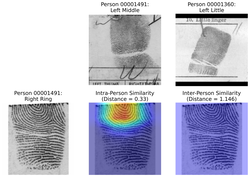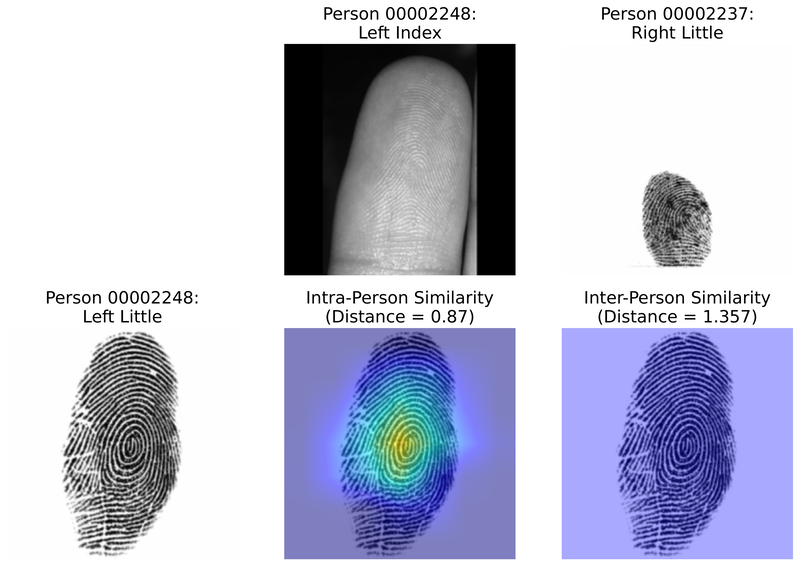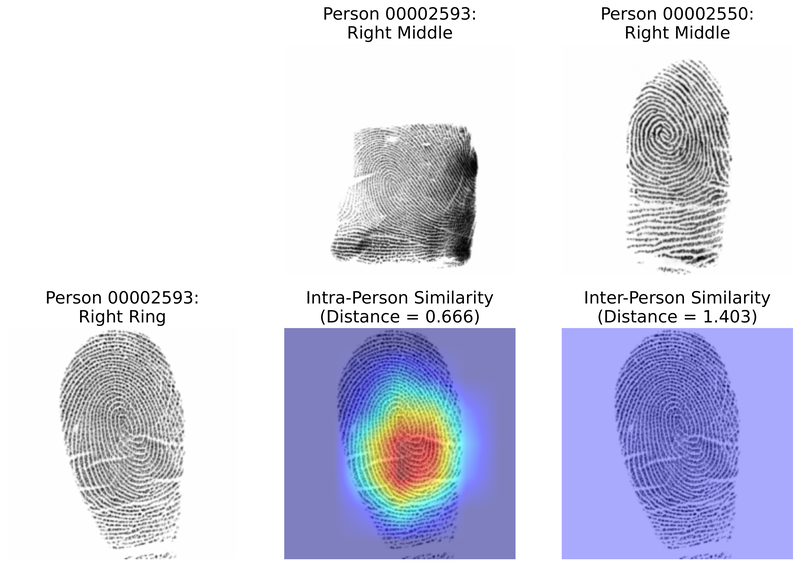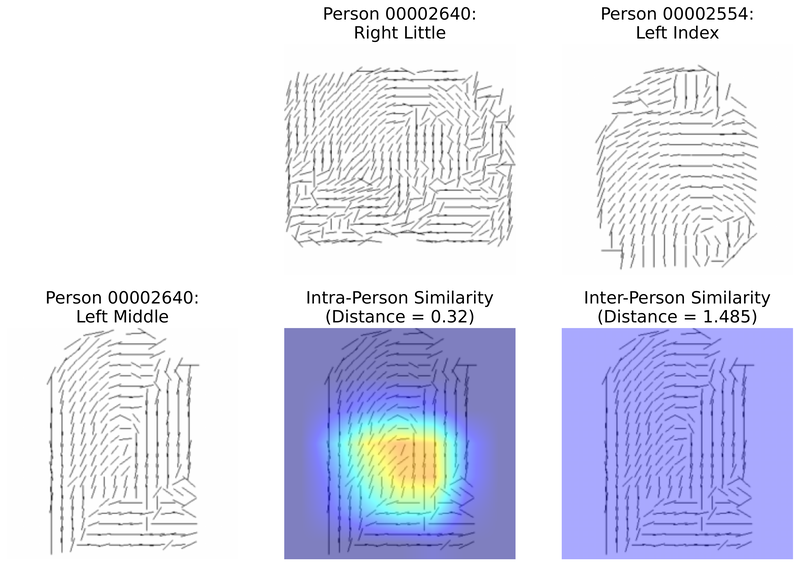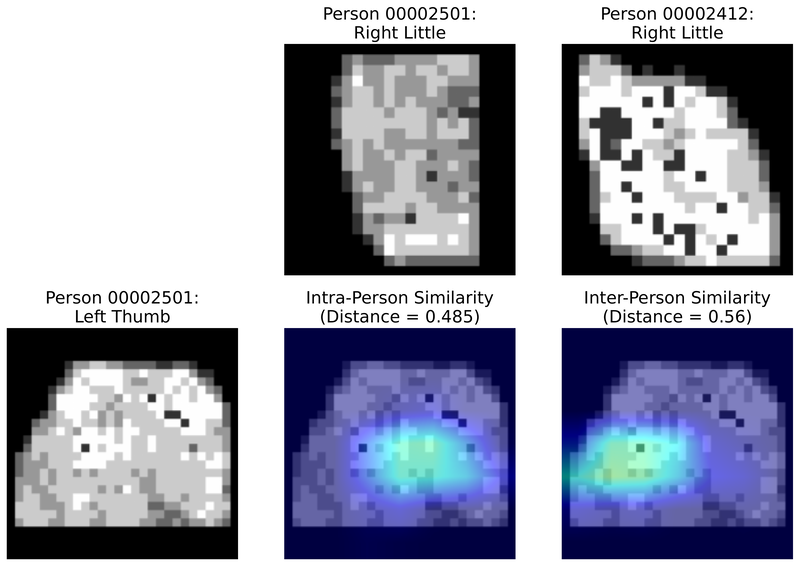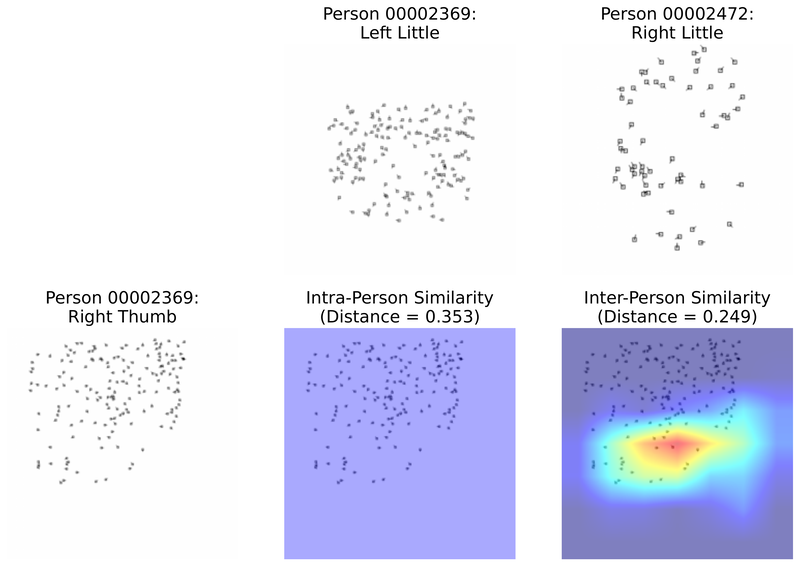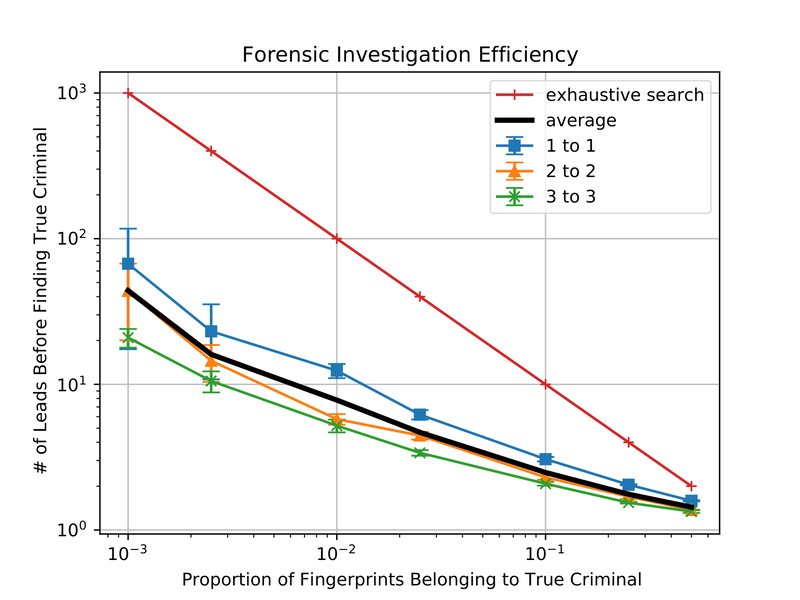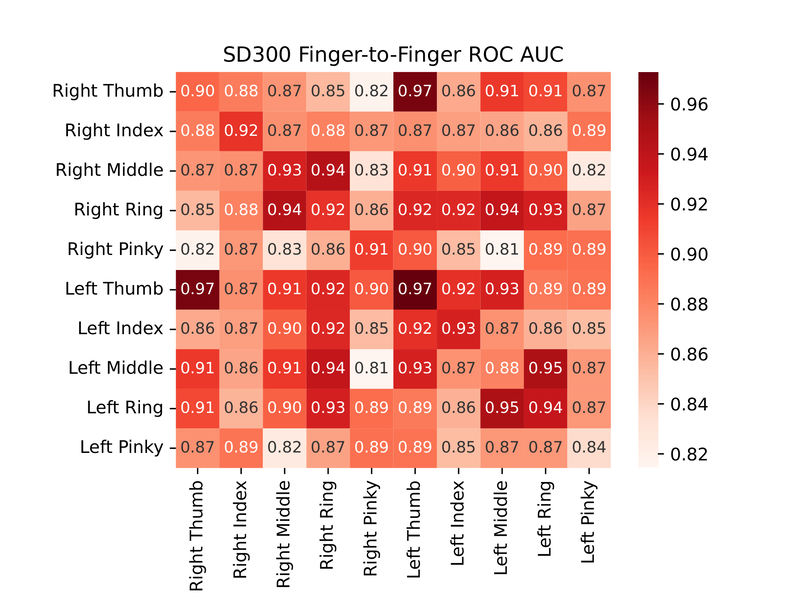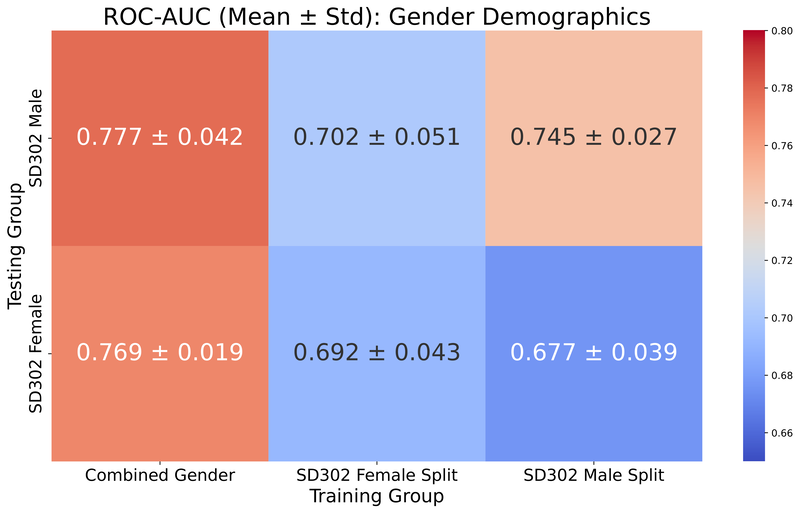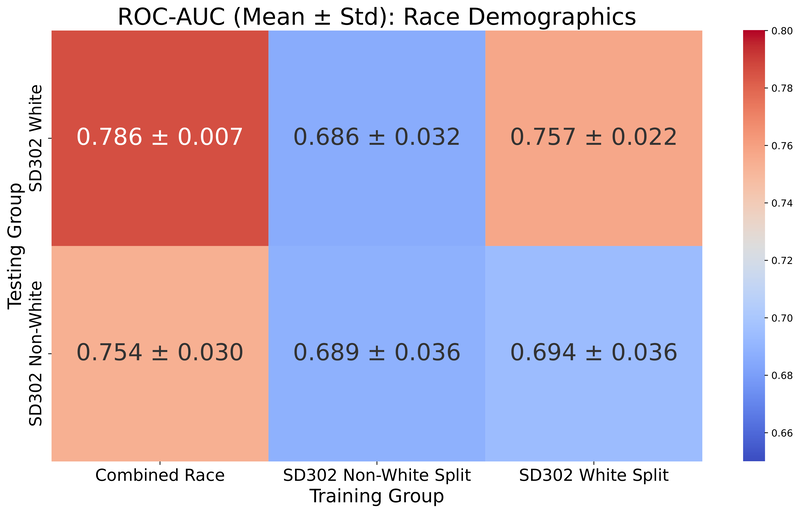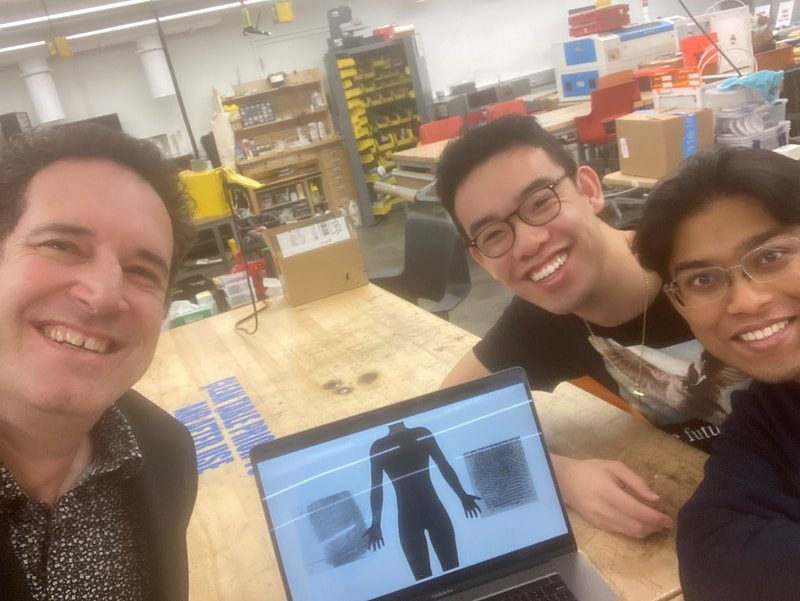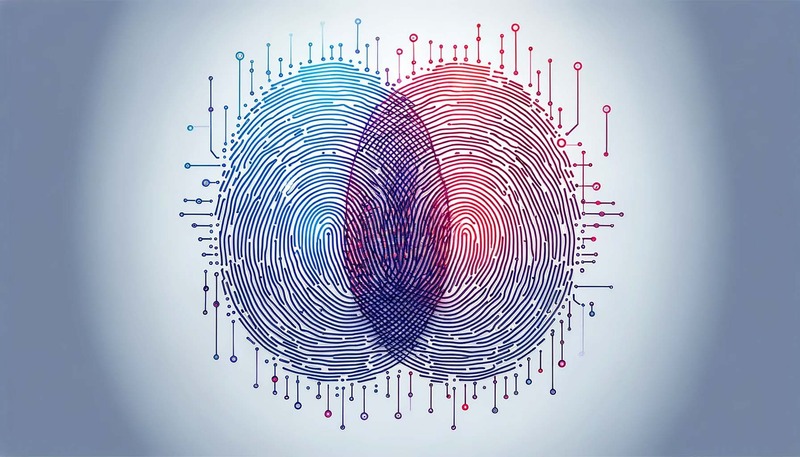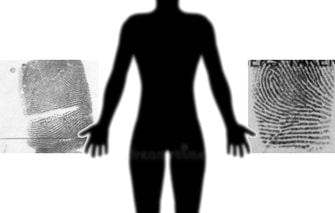
Try to unlock your phone using one finger, and it works. Try another finger, and it doesn’t. While the fact that different fingers of the same person have different fingerprints can be a nuisance for biometric authentication, this fact can present a grave consequence for more serious applications like forensics. If a perpetrator leaves fingerprints of different fingers in two distinct crime scenes, these crime scenes are more difficult to link, and the trace can go cold.
It’s a well-accepted fact in the forensics community that fingerprints of different fingers of the same person (aka ‘intra-person fingerprints’) are unique, and therefore unmatchable. Our team decided to challenge this widely-held presumption. Using a publicly available US government database of 60,000 fingerprints, we fed pairs of fingerprints into an AI system known as a deep contrastive network. Half of the pairs belonged to the same person (but different fingers); the other half belonged to entirely different people. Over time, the AI got better at telling when apparently-unique fingerprints belonged to the same person, and when they didn’t. The accuracy for a single pair reached 77%, and when multiple pairs were presented, the accuracy shot significantly higher, potentially increasing forensic efficiency by more than tenfold.
It’s a well-accepted fact in the forensics community that fingerprints of different fingers of the same person (aka ‘intra-person fingerprints’) are unique, and therefore unmatchable. Our team decided to challenge this widely-held presumption. Using a publicly available US government database of 60,000 fingerprints, we fed pairs of fingerprints into an AI system known as a deep contrastive network. Half of the pairs belonged to the same person (but different fingers); the other half belonged to entirely different people. Over time, the AI got better at telling when apparently-unique fingerprints belonged to the same person, and when they didn’t. The accuracy for a single pair reached 77%, and when multiple pairs were presented, the accuracy shot significantly higher, potentially increasing forensic efficiency by more than tenfold.
|
|
A natural question to ask is, what information could the AI be using, that evaded decades of forensic analysis? After some careful analysis, we concluded that the AI was using a new kind of forensic marker. In particular, it didn’t use ‘minutiae’, which are the branching and endpoints in fingerprint ridges that are traditionally used in traditional fingerprint comparison. Instead, it was looking at the angles and curvatures of the swirls and loops near the center of the fingerprint, a region known as the ‘singularity’.
We also provide evidence to indicate that the AI performs similarly across genders and races, where samples are available. However, more careful validation needs to be done using datasets with broader coverage if this technique is to be used in practice. |
We believe that this discovery is an example of more things to come. Many people think that AI cannot really discover new things -- that it just makes incremental discoveries. But this research is an example of how even a fairly simple AI, given a fairly plain dataset that we’ve had lying around for years, can gain insights that have eluded experts for decades. We are about to experience an explosion of AI-led scientific discovery by non-experts, and the expert community, including academia, needs to get ready.
Technical ABSTRACT
Fingerprint biometrics are integral to digital authentication and forensic science. However, they are based on the unproven assumption that no two fingerprints, even from different fingers of the same person, are alike. This renders them useless in scenarios where the presented fingerprints are from different fingers than those on record. Contrary to this prevailing assumption, we show with above 99.99% confidence (as obtained from one-sided t-tests) that fingerprints from different fingers of the same person share very strong similarities. Using deep twin neural networks to extract fingerprint representation vectors, we find that these similarities hold across all pairs of fingers, whether they come from different hands or the same hand of the same person. We also find evidence that ridge orientation, especially near the center of the fingerprint, explains a significant part of this correlation, whereas minutiae used in traditional methods are almost non-predictive. We systematically rule out spurious similarities by controlling for image background, image brightness, and sensor modality, while extensively interrogating the features extracted by our deep learning models. We provide evidence that, in some situations, this newfound relationship can increase the efficiency of forensic investigations by almost two orders of magnitude.
learn more |
Source Code: GitHub Fingerprint Correlation
|
Project participants |
Related Publications |
Gabe Guo, Aniv Ray, Miles Izydorczak, Judah Goldfeder, Hod Lipson, Wenyao Xu (2024) "Unveiling Intra-Person Fingerprint Similarity via Deep Contrastive Learning" Science Advances, Vol. 10, Issue 2
|

